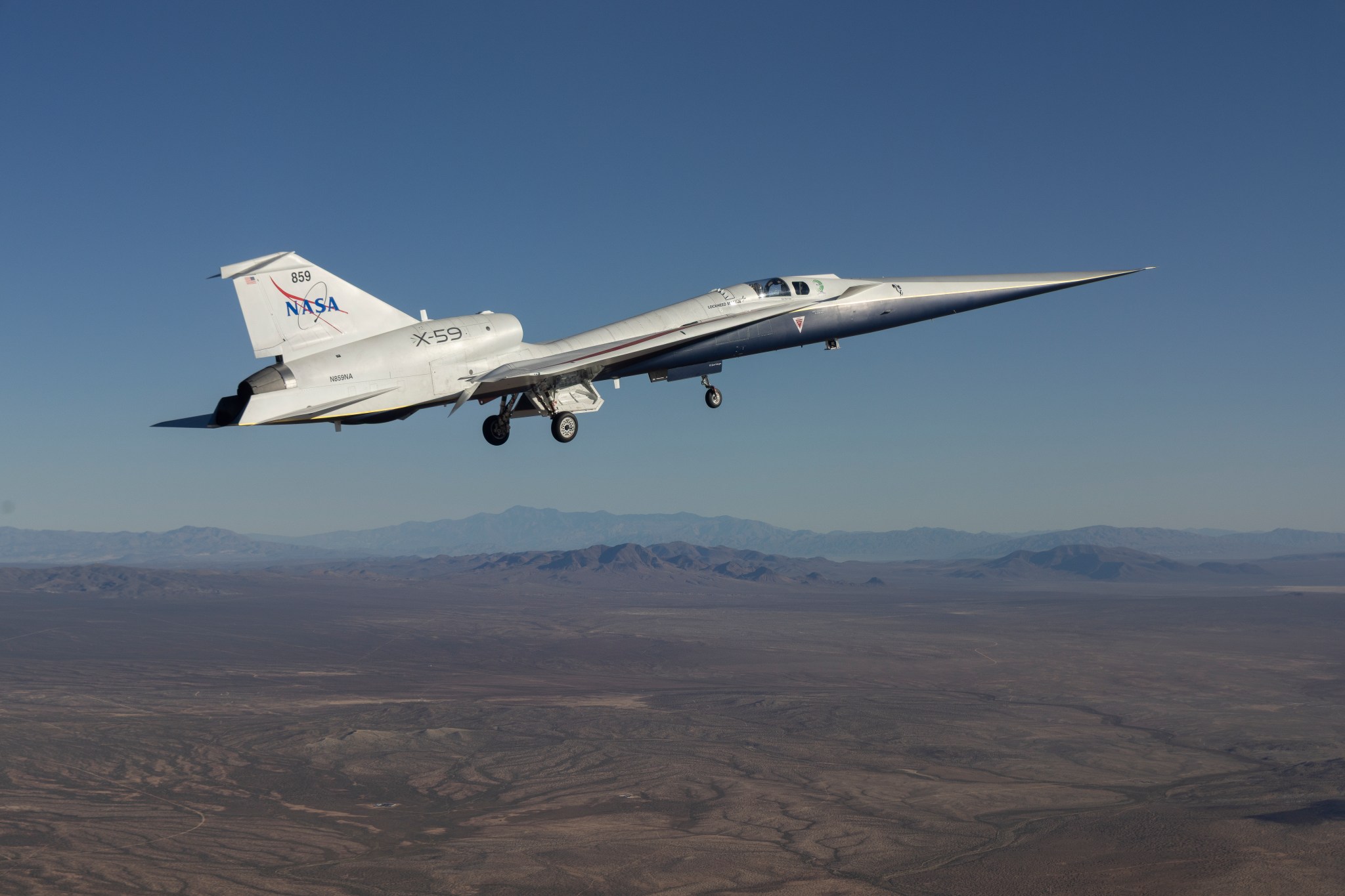NASA’s Quesst Mission Marks X-59’s Historic First Flight
- NASA’s X-59 quiet supersonic research aircraft successfully completed its historic first flight on October 28, 2025, from Lockheed Martin Skunk Works in Palmdale, California.
- The one-of-a-kind aircraft flew for 67 minutes at an altitude of about 12,000 feet and a top speed of approximately 230 mph, as planned by NASA test pilot Nils Larson.
- The X-59’s landing gear remained down during the entire flight, a common practice for experimental aircraft flying for the first time.
- The Quesst mission aims to usher in a new age of quiet supersonic flight through the unique design and technology of the X-59 in future supersonic transport aircraft.
- Future test flights will focus on operating at higher altitudes and supersonic speeds to ensure the X-59 meets performance and safety expectations, as part of NASA’s Quesst mission.
NASA’s X-59 quiet supersonic research aircraft took off for its historic first flight on Oct. 28, 2025, at 11:14 a.m. EDT from Lockheed Martin Skunk Works in Palmdale, California. The one-of-a-kind aircraft flew for 67 minutes before landing and taxiing to NASA’s Armstrong Flight Research Center in Edwards, California.
NASA test pilot Nils Larson flew the X-59 up to an altitude of about 12,000 feet and an approximate top speed of 230 mph, precisely as planned. The plane’s landing gear remained down during the entire flight, a common practice for experimental aircraft flying for the first time.
Now that the X-59’s first flight is in the books, the team is focused on preparing for a series of test flights where the aircraft will operate at higher altitudes and supersonic speeds. This test flight phase of NASA’s Quesst mission will ensure the X-59 meets performance and safety expectations.
Through the Quesst mission, NASA aims to usher in a new age of quiet supersonic flight, achieved through the unique design and technology of the X-59 in future supersonic transport aircraft.
Image Credit: NASA/Lori Losey

